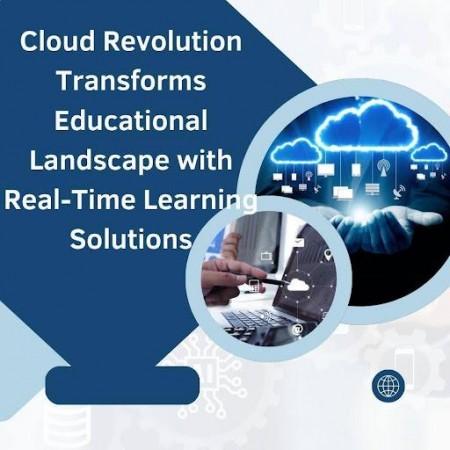
In a groundbreaking research paper published in the International Journal of Computer Engineering and Technology, Varshini Choudary Nuvvula, a software professional from the USA, presents a comprehensive framework for integrating cloud technology in educational systems. The study examines how cloud-based infrastructures are revolutionizing education through enhanced accessibility, scalability, and personalization capabilities.
The Dawn of Smart Classrooms
Modern educational platforms are witnessing a dramatic shift from traditional classroom-based instruction to technology-enhanced learning environments. Virtual classrooms have evolved into sophisticated real-time learning spaces that closely emulate traditional classroom dynamics while offering enhanced digital capabilities. These systems now incorporate multi-modal interaction features that support simultaneous audio, video, and data streams while maintaining detailed analytics of student engagement and participation patterns.
Personalization Takes Center Stage
Artificial intelligence and machine learning have revolutionized personalized education through sophisticated algorithms that adapt to individual learning patterns. These intelligent systems continuously analyze student performance and automatically adjust content difficulty and presentation methods. By tailoring educational experiences to each student's unique learning pace and preferences, the technology ensures more effective knowledge absorption. This dynamic approach transforms traditional one-size-fits-all education into a personalized journey that optimizes learning outcomes for every student.
Breaking Geographic Barriers
Global cloud infrastructure has revolutionized educational resource distribution, breaking down traditional geographic barriers. Through strategic placement of resources across worldwide data centers, institutions can now address longstanding educational inequalities more effectively. This transformation has particularly impacted the delivery of bandwidth-intensive content, including video lectures and interactive materials. Students worldwide can now access high-quality educational resources with consistent performance, regardless of their location or local infrastructure limitations.
Mobile Learning Revolution
Mobile learning technology has revolutionized educational access, particularly in developing regions, through sophisticated integration frameworks. These systems feature advanced synchronization capabilities that enable offline learning, optimize energy consumption, and adapt to different device capabilities. Students can now engage with educational content continuously, regardless of internet connectivity or device constraints. This breakthrough in mobile education has made quality learning accessible to students who previously faced significant technological barriers.
Future-Ready Education
The educational landscape is evolving rapidly with Extended Reality and Internet of Things technologies reshaping how students learn. These innovations are being carefully integrated into frameworks that prioritize both accessibility and educational effectiveness. While IoT devices enable more interactive and immersive learning experiences, their implementation maintains a careful balance between technological advancement and data privacy. This thoughtful approach ensures that innovation serves genuine educational needs while protecting student information and privacy.
Addressing the Digital Divide
While cloud technologies offer unprecedented opportunities for democratizing education, the research emphasizes the importance of addressing infrastructure disparities and economic barriers. The successful implementation of these technologies requires careful consideration of ethical implications, particularly regarding data privacy, equity, and accessibility. International cooperation in policy development and implementation is crucial for ensuring equitable access to educational technologies across different regions and socioeconomic contexts.
Looking Ahead
The rapid integration of cloud technologies is reshaping how education is delivered and received. As AI, Extended Reality, and IoT continue to evolve, they promise to further revolutionize the learning landscape. However, this technological advancement must be carefully guided by comprehensive regulatory frameworks and standards. The focus should remain on responsible implementation that enhances learning while protecting student interests and ensuring equitable access to educational resources.
In conclusion, integrating cloud technologies into education marks a pivotal shift in learning approaches. These innovations promise personalized education and wider accessibility, yet require balancing technology with human-centered values. As noted by Varshini Choudary Nuvvula, success lies in thoughtfully implementing these tools to enhance education accessibility while ensuring technology serves pedagogical needs rather than overshadowing them. The future of education depends on our ability to harness these technological advances mindfully and purposefully.
















